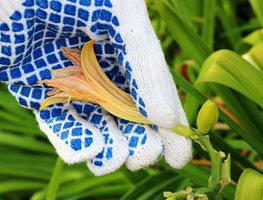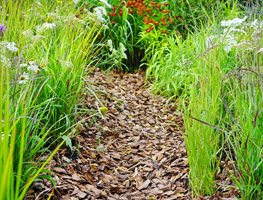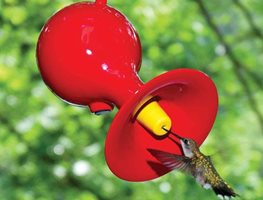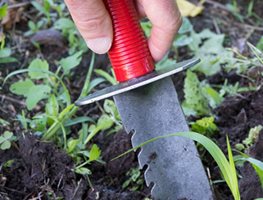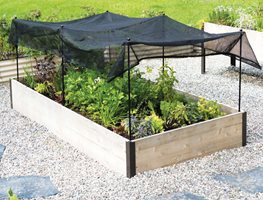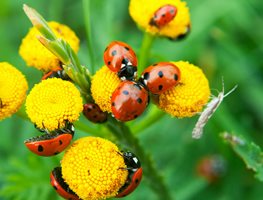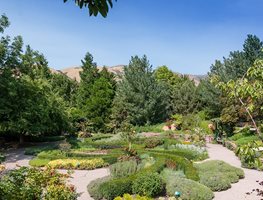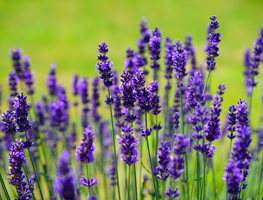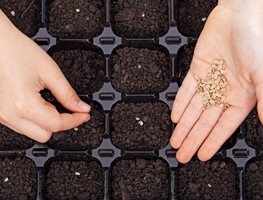10 Gardening Activities for August in the Southwest
Even though it’s still hot during the day, you may notice a bit of relief in the morning and evening. Use the cooler hours to work on your own garden, visit gardens and nurseries, and spend time outdoors. Here are a few garden reminders, inspiring ideas, and maintenance tips to keep in mind this month.
1. Get Outside Early (Or Late!) to Do Garden Maintenance
You don’t want to be outside during the hottest part of the day, so get into the garden early in the morning or later in the evening when temperatures are cooler. There are a variety of important gardening tasks to complete this month. Watering and making sure your irrigation systems are doing their job is perhaps the most important. Test sprinklers and drip irrigation lines by turning them on while you can walk around to see that plants are getting enough water and that emitters aren’t clogged. Watering container gardens is especially important in the heat. Harvest flowers and produce regularly because they will mature daily. Pinch back herb flowers to extend their harvest season. Harvest lettuce and other greens regularly to help prevent them from bolting. Fertilize citrus one last time for the year. Deadhead flowers that are past their prime to keep your garden looking tidy.
2. Top Dress Your Garden with Mulch, Gravel, or Stone
Summer rains can wash away areas of the garden, so replenish your garden with mulch or gravel if necessary. Top dressing with mulch helps keeps soil and plant roots cool. If you have a gravel garden, a consistent layer will help reduce weeds. If you don’t know the exact name of the mulch or gravel you have in your garden, take a small bag of what you have when you go to purchase more—this way you can properly match the size and color. Avoid using rubber mulch or artificially colored mulches. They leach chemicals into the soil when they get wet from rain or watering.
3. Bring in the Hummingbirds
The best way to attract hummingbirds to your garden is to include plants hummingbirds love: desert honeysuckle, Baja fairy duster, desert willow, red hesperaloe, Mexican honeysuckle, snapdragon vine, firecracker penstemon, Mexican bush sage, cape honeysuckle, yellow bells, coral fountain bush, and others. Hanging feeders is another sure way to attract hummingbirds. There are many different types available, ranging from feeders with simple designs such as this copper feeder, to artistic feeders made by artisans such as J Schatz.
4. Stay on Top of Weeds
Summer rain in the Southwest can cause an explosion of weed growth. Mix that with the heat, and you can have a serious weed problem in a hurry. If you want to keep your weed control methods organic, that means you’ll be hand-removing weeds or spraying with an organic weed killer. When removing weeds by hand, having the right tools goes a long way. We like this digging tool (like a soil knife), this long-handled hoe, and this handy brush and weeder (the brush helps weed among narrow grout in paving while the knife gets at pesky roots).
5. Protect Plants from Burning
If you get extreme heat, protect your aloes, succulents, and other plants that may burn. You can drape black shade fabric over individual plants and secure it with small stakes or rocks. Don’t leave fabric over plants for extended periods. For raised beds, you can use 4- by 8-foot shade kits.
Don't miss what to do in the garden each month, make sure you're getting our weekly newsletter.
6. Protect Beneficial Insects
Many insects are beneficial to your garden: native bees, ladybugs, native parasitic wasps, damsel bugs, lacewings, and more. They eat or kill the bad bugs such as aphids, hornworms, borers, cucumber beetles, mealybugs, and spider mites. There are a few ways to attract and protect beneficial insects. One, plant a mix of native plants for your area that support wildlife and insect life. Beneficial insects often need a consistent supply of accessible nectar, so flowers with short tubes such as asters, sunflowers, coneflowers, and herbs are great. The National Wildlife Federation has a native plant finder to search for plants that attract wildlife in your local area by providing habitat and nectar. Two, don’t use pesticides or sprays because you might inadvertently kill beneficial insects. Three, learn to tolerate some damage to plants (for example, without aphids, you won’t have as many ladybugs—so it’s a give-and-take situation). Over time, the right balance of beneficial insects to bad bugs will develop. To learn more about designing a garden that benefits your local ecosystem, read Doug Tallamy’s book The Living Landscape: Designing for Beauty and Biodiversity in the Home Garden.
7. Visit Gardens of the Southwest (in person or from home)
There are many extraordinary gardens, so we created a collection of self-guided day trips with beautiful photos to browse from home, along with insights and information to help you plan your next trip and make the most of your time in each location!
Phoenix Day Trip: See the Xeriscape Demonstration Garden, Desert Botanical Garden, and The Rose Garden at Mesa Community College. All recommended by horticulturist Noelle Johnson.
Tucson Day Drip: Local expert Monica Hemingway takes you through Tohono Chul, Pima Master Gardener Public Demonstration Gardens, and Tucson Botanical Gardens.
Denver Day Trip: See beautiful sustainable gardens: the Aurora Water-Wise Garden, Denver Botanic Gardens’ Steppe Garden, and the Gardens at Kendrick Lake. All guided by Colorado native Jodi Torpey.
Austin Day Trip: Visit 3 outstanding gardens recommended by local expert Diana Kirby: the Lady Bird Johnson Wildflower Center, the Zilker Botanical Garden, and the Mayfield Park and Preserve.
Salt Lake City Day Trip: Local landscape designer Cynthia Nielson Bee takes you to Red Butte Botanical Garden (pictured), Conservation Garden Park, and dening, Ashton Gardens at Thanksgiving Point.
8. Blooming Now
Lavender (pictured) is a great way to deter mosquitos and other pests while enjoying summer nights out in the garden. Use it in the kitchen too—put a dried spring in your sugar jar for a sweet infusion.
Long blooming and drought tolerant, red hot poker (Kniphofia) is a great perennial to have, not just for the cool upright flowers but to welcome pollinators as well.
Great for moonlight gardens and cottage gardens, shasta daisies love the sun, but brighten up the night too!
9. Get Out of the Heat and Read a Good Blog
When you want a break from the heat or if you’re interested in getting ideas for your Southwest garden, check out Central Texas Gardener, where there's not only blog posts, but video as well. You'll be taken on tours of gardens, find resources, meet gardeners, and more. Looking for a little fun too? Let us introduce you to "The Brandon's" of Vivero Growers in Austin, TX. They shared a pruning tip with us about taking care of perennials in summer heat on our Instagram page.
10. Sow Fall Crops & Refresh Your Tomatoes
The beginning of fall is already next month, so it’s time to sow those fall crops. Some crops to sow in the Southwest in August include broccoli, beets, cabbage, cauliflower, carrots, lettuce (head and leaf types), onions, peas, radishes, spinach, turnips, and winter squash. Be sure to double check that the crops you want to plant will mature before your first frost date. If you already have tomatoes growing, now is a good time to cut back your tomato plants to about 1 foot tall. If you fertilize the plants well and are consistent with deep watering, you’ll be able to harvest tomatoes into the fall.
If you enjoyed this information, sign up for our weekly newsletter. Each week, you'll get Garden Design's best delivered right to your inbox including design tips, plant picks, great gardens, outdoor living products, and events to enjoy — along with monthly gardening checklists just for your area.
Do you know someone who would enjoy this Southwest Region gardening information? Why not share it with them?
When you purchase products through links on our site, we may receive an affiliate commission. Thank you for your support.
